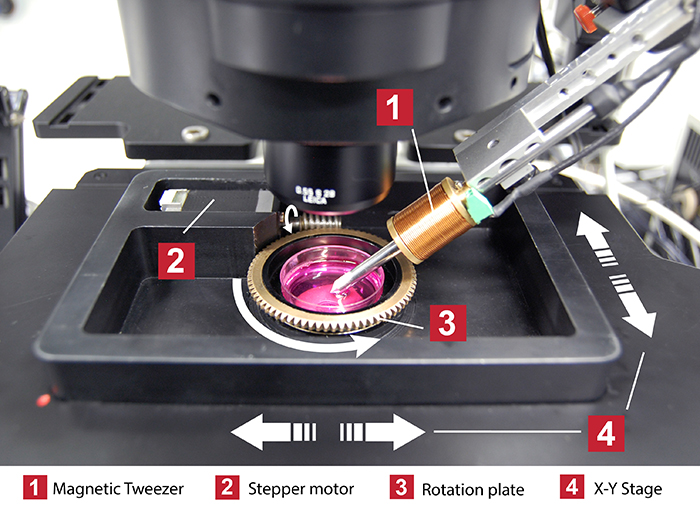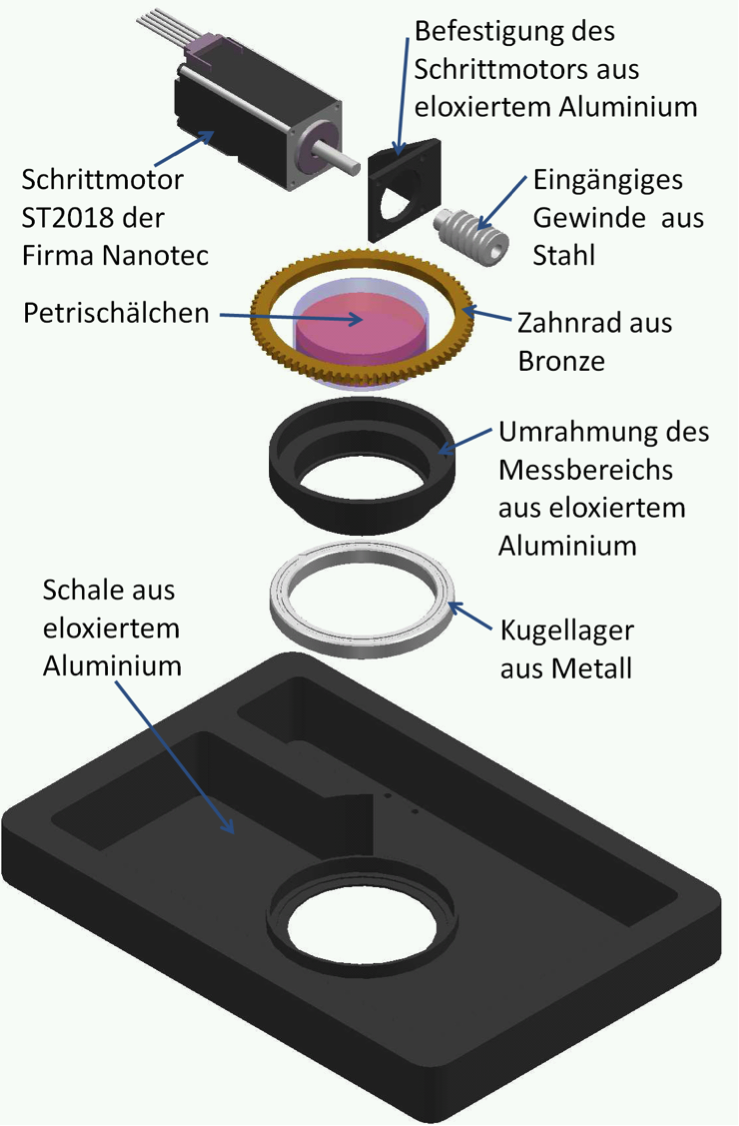
Scientific rheometer used to study the mechanical properties of biological materials in the micrometer range
Read moreMeasuring the contractile forces of cells to the underlying substrate
Read moreTechnique to estimate the migration speed of different cell lines on 2D substrates
Read moreThe magnetic tweezer is a very versatile tool. Nevertheless all measurements with this device are limited to unidirectional force application as magnetic particles can only be pulled in the direction of increasing fields, but not pushed away. However, for a lot of cell mechanical experiments a multidirectional force application is needed. Therefore, a rotational device was built, which enables to rotate cells to any angle relative to the magnetic tweezer device and thus enables multidirectional force application.

A stepper motor (ST208 Nanotec) turns a steel thread which is connected to the bronze cog wheel which turns the framing with the culture dish. The framing lies on a ball bearing mounted in the housing. The motor is connected to the computer allowing to give commands for arbitrary rotations.
